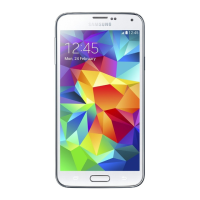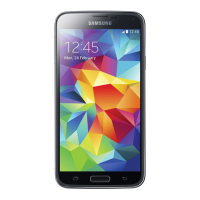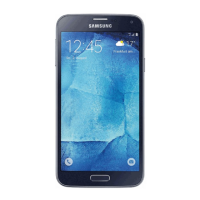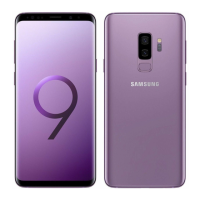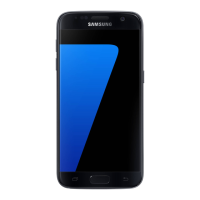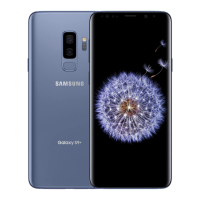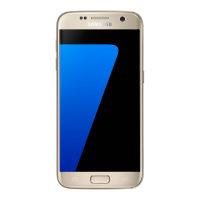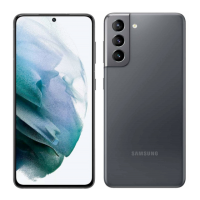Do you have a question about the Samsung SM-G900F and is the answer not in the manual?
Provides step-by-step instructions for inserting SIM/USIM cards and the battery.
Details the process of charging the device's battery using the provided charger.
Guides on how to insert and manage memory cards for expanded storage.
Steps to connect the device to a Wi-Fi network for internet access.
Instructions on how to initiate voice and video calls from the device.
Methods for answering or rejecting incoming phone calls.
How to compose and send text (SMS) and multimedia (MMS) messages.
Basic operations for capturing photos and videos with the device camera.
Using the device's internet browser to access and navigate websites.
Using the pedometer to track steps, distance, and calories burnt.
Using voice commands to perform various device functions.
Optimizing device usage with voice commands while driving.
Registering and using fingerprints for device security and authentication.
Extending battery life and sending emergency information.
Utilizing Near Field Communication for data transfer and payments.
Pairing and exchanging data wirelessly with other Bluetooth devices.
Updating the device software over-the-air or via Samsung Kies.
Moving data between the device and a computer using a USB cable.
Securing personal information and app data using Google or Samsung accounts.
Managing Wi-Fi and mobile network connections and settings.
Managing accounts, cloud storage, and data backup and restore options.
Configuring emergency mode, contacts, and messages.
Securing the device with encryption, passwords, and fingerprint recognition.
Customizing call features like rejection, answering, and call alerts.
Screen reader providing voice feedback for visually impaired users.
Steps to diagnose and fix issues if the device fails to power on.
Troubleshooting steps for slow or unresponsive touch screen behavior.
Methods to resolve device freezing, unresponsiveness, or fatal errors.
Provides step-by-step instructions for inserting SIM/USIM cards and the battery.
Details the process of charging the device's battery using the provided charger.
Guides on how to insert and manage memory cards for expanded storage.
Steps to connect the device to a Wi-Fi network for internet access.
Instructions on how to initiate voice and video calls from the device.
Methods for answering or rejecting incoming phone calls.
How to compose and send text (SMS) and multimedia (MMS) messages.
Basic operations for capturing photos and videos with the device camera.
Using the device's internet browser to access and navigate websites.
Using the pedometer to track steps, distance, and calories burnt.
Using voice commands to perform various device functions.
Optimizing device usage with voice commands while driving.
Registering and using fingerprints for device security and authentication.
Extending battery life and sending emergency information.
Utilizing Near Field Communication for data transfer and payments.
Pairing and exchanging data wirelessly with other Bluetooth devices.
Updating the device software over-the-air or via Samsung Kies.
Moving data between the device and a computer using a USB cable.
Securing personal information and app data using Google or Samsung accounts.
Managing Wi-Fi and mobile network connections and settings.
Managing accounts, cloud storage, and data backup and restore options.
Configuring emergency mode, contacts, and messages.
Securing the device with encryption, passwords, and fingerprint recognition.
Customizing call features like rejection, answering, and call alerts.
Screen reader providing voice feedback for visually impaired users.
Steps to diagnose and fix issues if the device fails to power on.
Troubleshooting steps for slow or unresponsive touch screen behavior.
Methods to resolve device freezing, unresponsiveness, or fatal errors.
| Model | SM-G900F |
|---|---|
| Also known as | Samsung Galaxy S5 |
| Category | Cell Phone |
| Announced | 2014, February |
| Status | Discontinued |
| Dimensions | 142 x 72.5 x 8.1 mm (5.59 x 2.85 x 0.32 in) |
| Weight | 145 g (5.11 oz) |
| SIM | Micro-SIM |
| Network Technology | GSM / HSPA / LTE |
| Display Type | Super AMOLED |
| Display Protection | Corning Gorilla Glass 3 |
| Chipset | Qualcomm MSM8974AC Snapdragon 801 (28 nm) |
| CPU | Quad-core 2.5 GHz Krait 400 |
| GPU | Adreno 330 |
| RAM | 2GB |
| Expandable Storage | microSDXC (dedicated slot) |
| Main Camera | 16 MP, f/2.2, 31mm (standard), 1/2.6", 1.12µm, PDAF |
| Selfie Camera | 2 MP, f/2.4, 22mm (wide) |
| Selfie Camera Video | 1080p@30fps |
| Battery | Removable Li-Ion 2800 mAh battery |
| Colors | Black, White, Blue, Gold |
| Bluetooth | 4.0, A2DP, EDR, LE |
| GPS | Yes, with A-GPS, GLONASS, BDS |
| NFC | Yes |
| Infrared Port | Yes |
| USB | microUSB 3.0, USB On-The-Go |
| Display Size | 5.1 inches |
| Display Resolution | 1080 x 1920 pixels |
| OS | Android 4.4.2 (KitKat), upgradable to 6.0 (Marshmallow) |
| Internal Memory | 16GB |
| Main Camera Video | 4K@30fps, 1080p@60fps, 720p@120fps |
| Sensors | Fingerprint (front-mounted), accelerometer, gyro, proximity, compass, barometer |
| Build | Glass front (Gorilla Glass 3), plastic back |
